While Dacia’s rivals focus on turning everything into SUVs, the Jogger (at €23,290) is the cheapest new seven-seater value beating MPV. The Jogger’s fuel economy is respectable for its class, as are its emissions compared with other petrol rivals. Its ‘performance’ obviously takes a hit when fully loaded though.
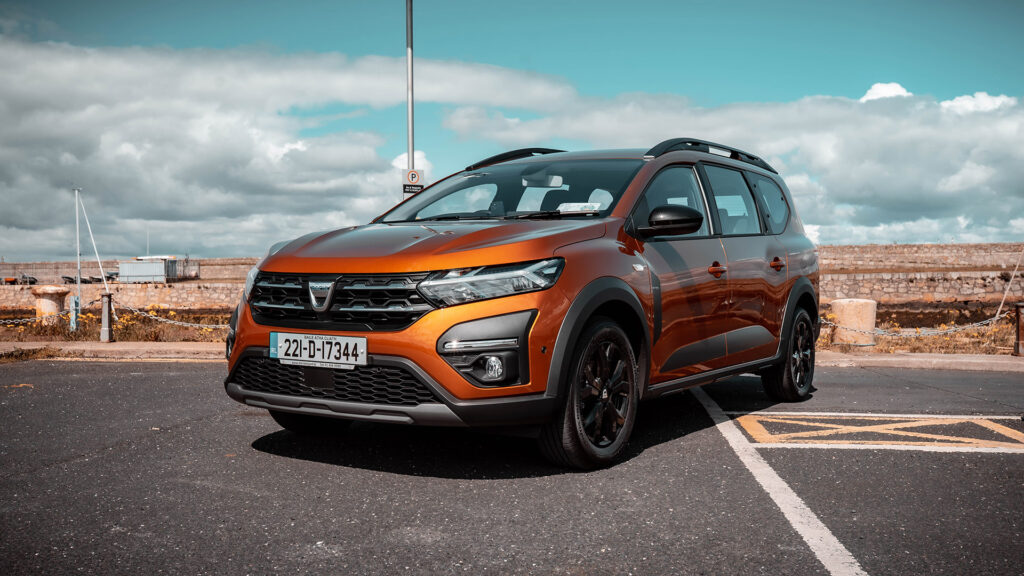
| BHP 109 | Petrol / Manual |
| 0-100 km/h in 11.2 seconds | Road Tax €200 |
Price: €23,290.00 As Spec’d €27,185.00 | Boot space 160, 699, 2,000 litres |
For a tall car it has very little rock n roll and the Jogger’s light steering means it’s easy to nip around town in. Its slow response makes it a little wide of precision when cornering on winding roads but grips well through the bends. Engine noise and turbo whistle leak into the cabin from the three-cylinder petrol engine but is fine once up to speed and cruising. It’s very light at 1,200 kgs, especially by seven-seater standards, and feels on the edge of nippy. The Jogger is relaxing while cruising on a motorway and while the suspension is soft, it’s definitely better to drive than the majority of the van-based MPV’s.
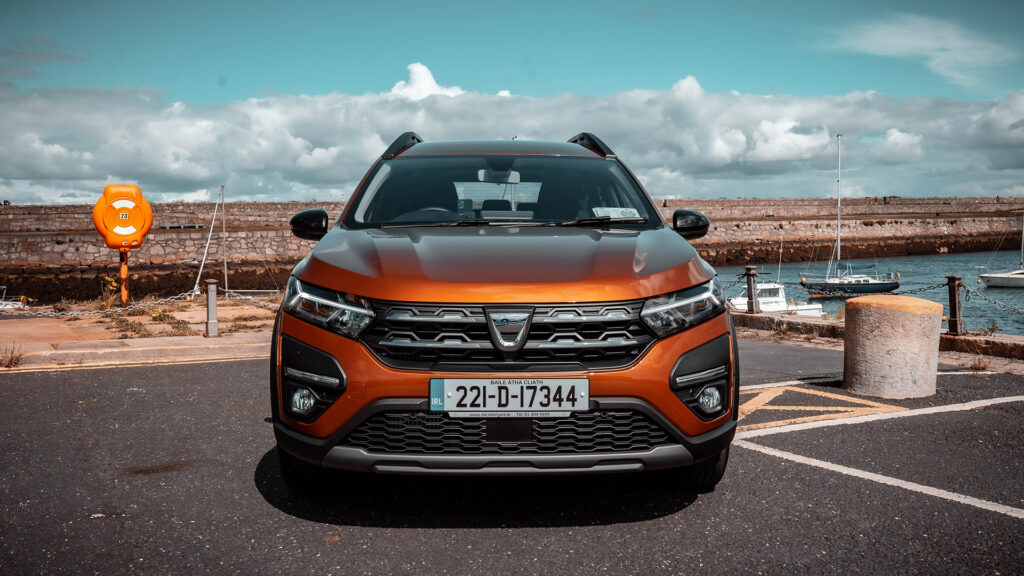
Inside the tasteful cloth trim part covers the front doors and dash, with satin chrome accents on air vents, door handles and dials. Comfort trim has an 8.0in colour touchscreen that includes Apple CarPlay and Android Auto making it easy to use apps from your mobile device for calls, music and navigation. There’s a handy mobile phone holder to the side of the infotainment screen but unfortunately, depending on your seat position, it may end up being hidden from view. In Extreme SE versions, you get wireless CarPlay and a built-in sat-nav system (always handy for those perhaps infrequent but nevertheless concerning loss of mobile signal situations). The touchscreen is mounted high up on the dashboard and is angled towards the driver giving a good view of all the menus etc. there are touch-sensitive shortcut buttons down the side. There aren’t too many sub-menus and switching between radio and sat-nav is easy thanks to the direct shortcuts. The Jogger’s dashboard feels solidly built, and the selection of materials is more advanced than the rough black plastic of the old Duster and Sandero.
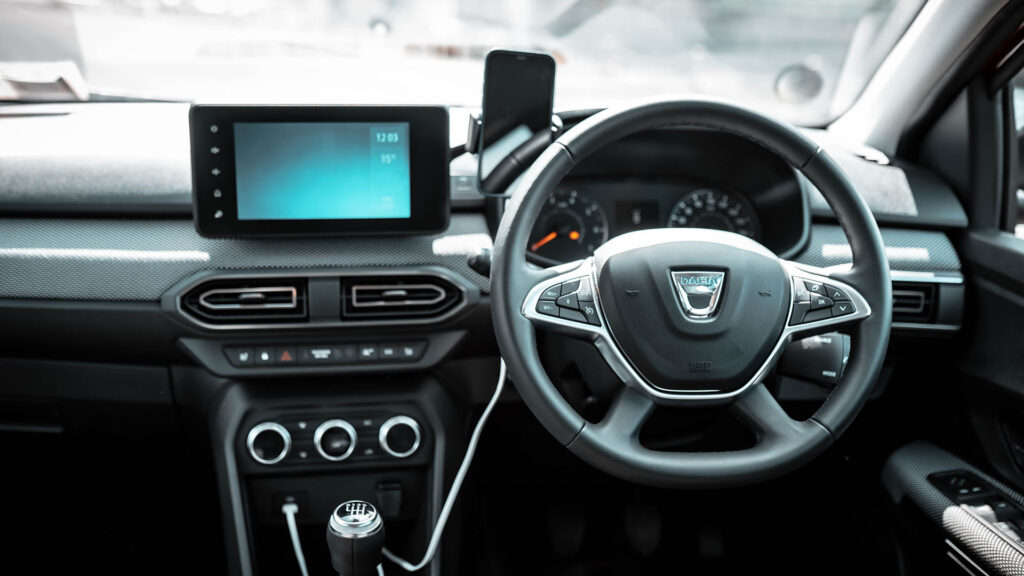
There’s a modest 212-litre boot with all seats in use. And then there’s a vast 699-litre boot when the seats are folded. Pull a little loop on the top of the seat back and the seat folds forward to give access to the back row. It’s tight in the back for head and knee room but it’s still more comfortable back there than in a Kodiaq or Discovery Sport. A hidden talent means you can easily remove the rear seats for an even greater amount of space. For a seven-seater though, it could do with more than two Isofix points. And if you need to bring along extra baggage or equipment for the occupants, there’s a modular roof rack available which can hold 80 kgs.
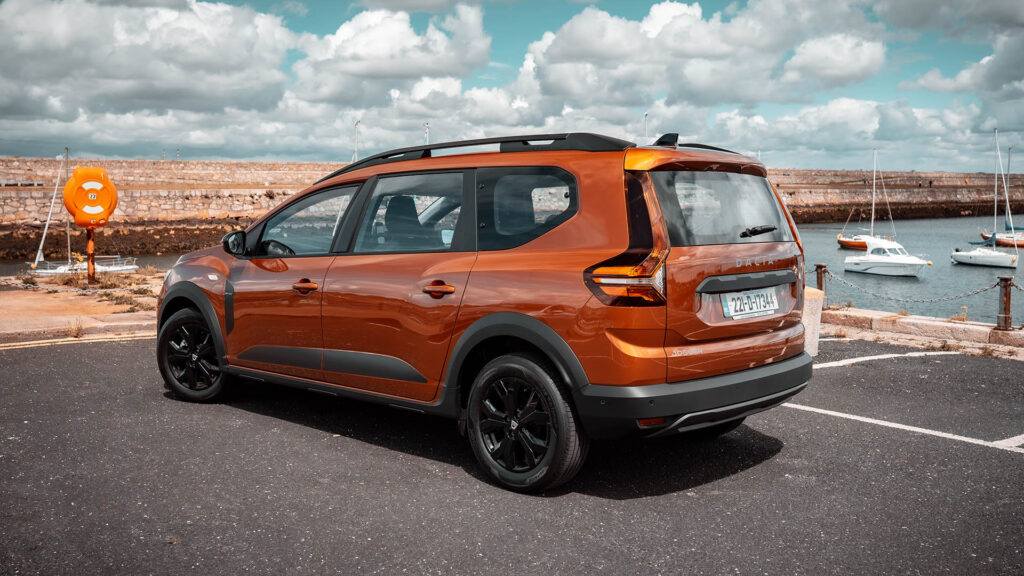
The large rear three-quarter windows make it easier to see out the back when you’re reversing, and all versions have rear parking sensors anyway. Mid-range Comfort adds a camera and front sensors. A high driving position and relatively narrow windscreen pillars gives a good forward visibility. The over-the-shoulder view is fine too, and on all but the entry-level trim you get a blind-spot warning. The Jogger has a pleasing mechanical feel when shifting and changing gears, it could do with some textile improvement but is overall a fun and light manual without passengers onboard. If you intend to use it as a 7 seater, perhaps you should try it with a full load before giving a definitive judgement. Most buyers will probably keep the third row folded (or removed completely) most of the time. Folding them down and removing the rear seats opens up an incredible 2,085-litre loadbay. The rearmost seats only weigh 10 kg and are easy to remove.
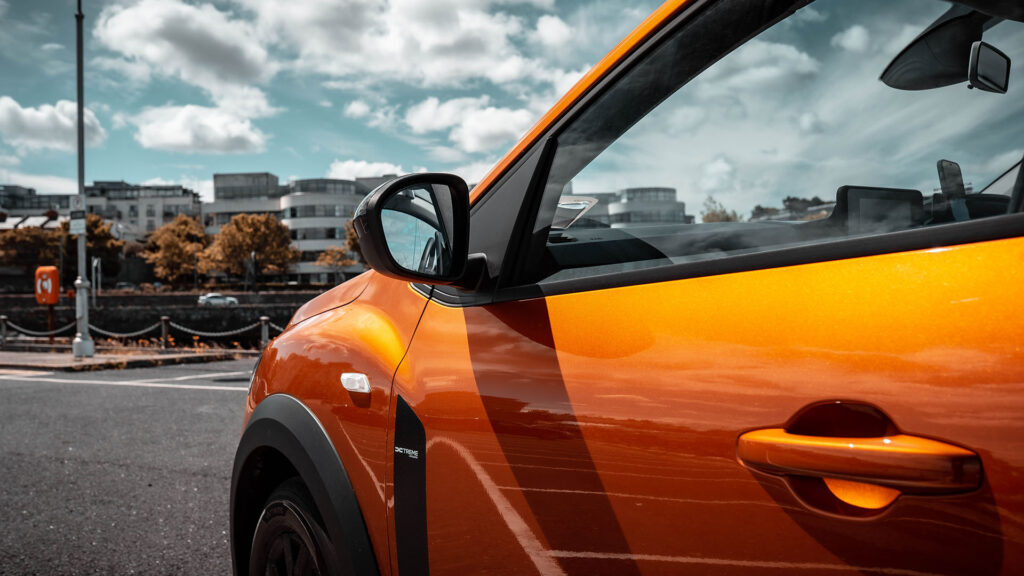
All Joggers feature Dacia’s 1.0-litre petrol engine, and the little 3cyl takes an unsurprising 11.2 secs to get from 0–100 kp/h but the economy is what’s important here. And to further help with the economy, cruise control is available on all specs as standard, but you’ll have to remember that it’s not an adaptive system. Next year, the engine range will include a hybrid option (as seen in the Clio E-Tech) and Dacia says that up to 80% of journeys around town could feasibly be carried out on fully electric power. Due to its stretched wheelbase and economy busting 16-inch wheels, the Jogger is very comfortable in town. Hit a pothole and you generally won’t feel it, generally it’s impressive at low speeds. Overall, the Jogger is an easy way to get from A-to-B, the steering can be slightly heavy, and is most noticeable when you’re parking or maneuvering. It’s so easy to live with day-to-day, all the aircon controls are physical buttons and right where they should be.
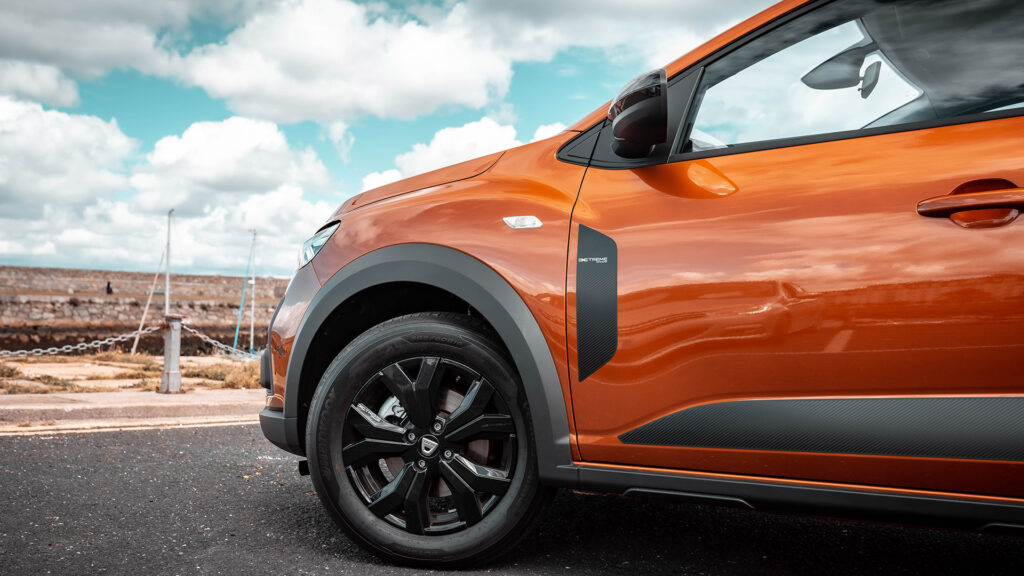
The Jogger starts from €23,290 in base Essential trim, which features air conditioning, rear parking sensors, cruise control and auto headlights as standard. Next in the lineup is Comfort trim (€25,090) which adds the adjustable roof bars, Android Auto and Apple CarPlay, front parking sensors and a reversing camera. The top-of-the-line Extreme SE (€26,590), heated front seats, built-in navigation system and alloys.
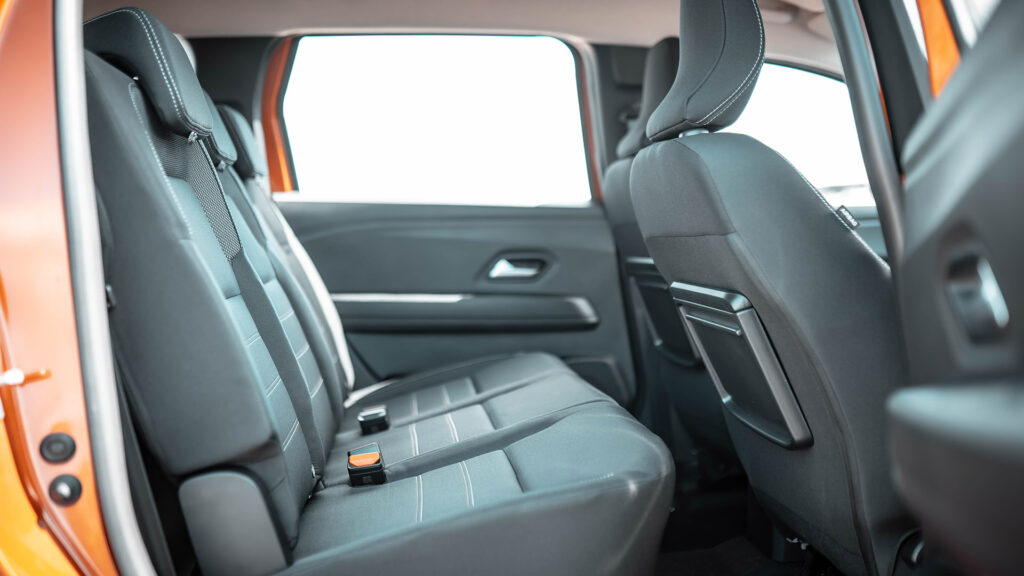
The Jogger nailed the objective and achieves its accomplishments at a genuinely affordable price. Because the third row of seats, which are likely to have children in them, don’t have airbags or seat belts (save the roof belt) it only received one star out of five on the Euro NCAP.The versatility available from the Jogger at this end of the market and with the kit available is very hard to beat at this price. It’s basic and it works exactly as intended. It’s not trying to be anything other than what it is and it does this all so very well.
